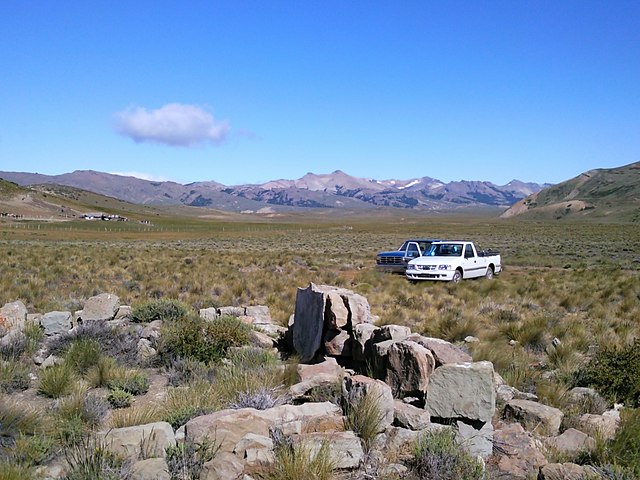The Magellanic penguin is a South American penguin, breeding in coastal Patagonia, including Argentina, Chile, and the Falkland Islands, with some migrating to Brazil and Uruguay, where they are occasionally seen as far north as Espirito Santo. Vagrants have been found in El Salvador, the Avian Island in Antarctica, Australia, and New Zealand. It is the most numerous of the Spheniscus banded penguins. Its nearest relatives are the African penguin, the Humboldt penguin, and the Galápagos penguins. The Magellanic penguin was named after Portuguese explorer Ferdinand Magellan, who spotted the birds in 1520. The species is listed as being of Least Concern by the IUCN.
Magellanic penguin
Magellanic penguin on Argentina's coast
Skeleton of a Magellanic penguin
Adults and chicks by their burrow in Cape Virgenes, Patagonia, Argentina
Patagonia is a geographical region that encompasses the southern end of South America, governed by Argentina and Chile. The region comprises the southern section of the Andes Mountains with lakes, fjords, temperate rainforests, and glaciers in the west and deserts, tablelands, and steppes to the east. Patagonia is bounded by the Pacific Ocean on the west, the Atlantic Ocean to the east, and many bodies of water that connect them, such as the Strait of Magellan, the Beagle Channel, and the Drake Passage to the south.
Río Negro Province, Argentina
Ainsworth Bay and Marinelli Glacier, Chile
View of Punta Arenas, Chile, in winter
Santa Cruz Province








